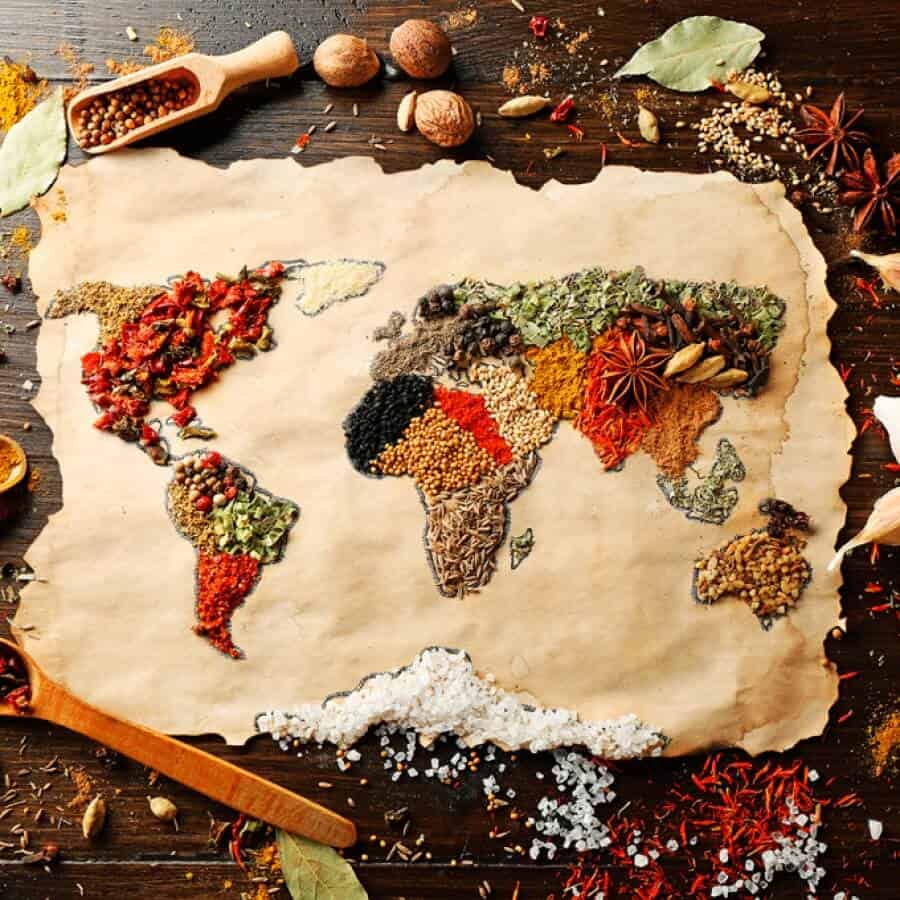Many men died in their search for spices and many peaceful countries were conquered and colonised after these spice growing countries were found. What today costs a fraction of a Euro could at one time buy a house in central London.
First among these men was Christopher Columbus who commanded his three ships Nina, Pinta and Santa Maria and set sail for India in onerous and brutal conditions but instead ended up in America in 1492. A few years later the Portuguese explorer Vasco da Gama discovered the route to India. A little more than 80 years after that Sir Francis Drake went forth on his perilous journey wish included Asia in search of spices, precious stones, pearls and gold in his ship the Golden Hind. He was thought to have died in this adventure but eventually returned to England, to great acclaim and honour all because he brought back a few thousand kilos of cloves from Indonesia. At that time even cloves were worth much more than their weight in gold.
While spices have been used in India and many parts of Asia since antiquity they were introduced to Europe and then the rest of the world once the spice route was established from Asia to Europe via Northeast Africa.
So, lets look at some of the spices and the benefits they offer in addition to the taste and flavour in many cuisines.
Curcuma
This powerful spice used in India has several bioactive compounds, all of medicinal value. Scientists acknowledge that it is due to the consumption of this very spice that there is almost an absence of Alzheimer’s disease in India. Scientists also acknowledge several other benefits of this spice. It is a natural anti-inflamatory, is able to cure the damage to the blood vessel lining thus reversing heart disease, improves brain function, studies are ongoing since it is confirmed that curcumin can aid treating and preventing several types of cancer, is known to boost Serotonin and Dopamine thus elevating moods and it increases anti oxidants in the body. Studies are currently on to determine if Curcuma helps delay ageing.

Cinnamon
Helps increase blood circulation, aids towards prevention of heart diseases and keeps the breath naturally fresh. Cinnamon tea has become a popular drink aside from its uses in Asian cooking and Western deserts.

Cumin
This spice contains Thymol which is known to help the digestive system. In Asia apart from being added to foods regularly it is used to treat respiratory disorders. It is also known to help keep a younger skin. Cumin water is commonly sold in many parts of India during the Summer since it helps rehydrate the body. Cumin water is also known to relieve menstrual cramps. 
Asafoetida
This spice is known to be used for treating Asthma and flatulence. It’s commonly added to lentils and beans during cooking in the East.

Aniseed
Also called Anise is used as a mouth freshener and helps calm down an upset stomach. It is regularly used with honey for calming an irritated throat and promotes comfortable coughing for expectorating.

Coriander
Some hate it and the others love this herb. Apart from the flavour this is an excellent source of magnesium and manganese. Coriander powder helps reduce bad cholesterol.

Dry red chili
Not for everyone though, red chili is known to reduce cholesterol and triglycerides.

Cloves
These prevent bacterial infections. Clove oil is also used for toothaches. Cloves are said to have a beneficial effect on the liver.

Nutmeg and Mace
Both of these come from the same tree. Mace is the outer coating of Nutmeg. Both have benefits of promoting digestive health and prevention of constipation.


Black Pepper
This spice is necessary for better absorption of Curcuma. It also helps in digestion and weight reduction.

The world now includes many of the spices in foods. To think of it, the national dish of the U.K. is now chicken tikka masala.
Photos: Shutterstock
Support us!
All your donations will be used to pay the magazine’s journalists and to support the ongoing costs of maintaining the site.
Share this post
Interested in co-operating with us?
We are open to co-operation from writers and businesses alike. You can reach us on our email at cooperations@youthtimemag.com/magazine@youthtimemag.com and we will get back to you as quick as we can.









